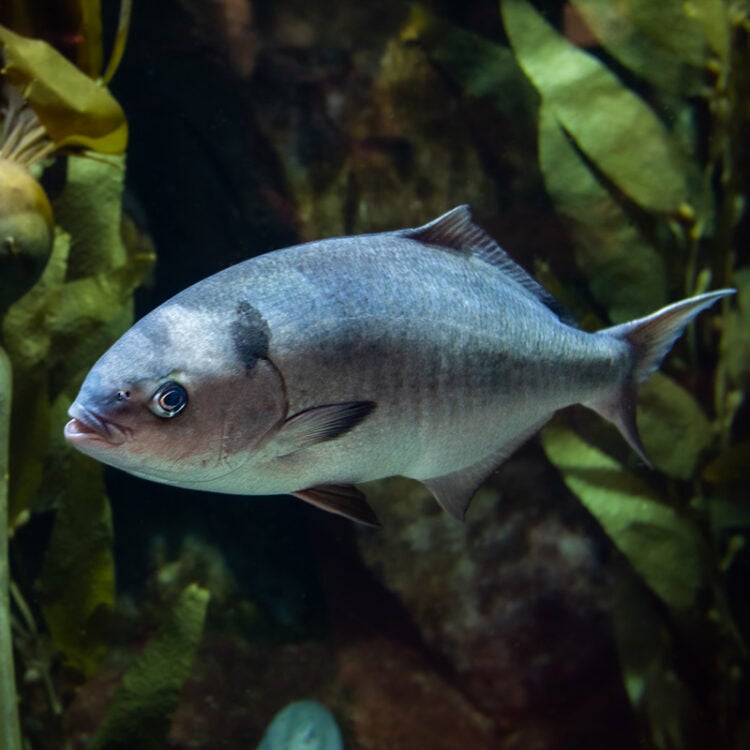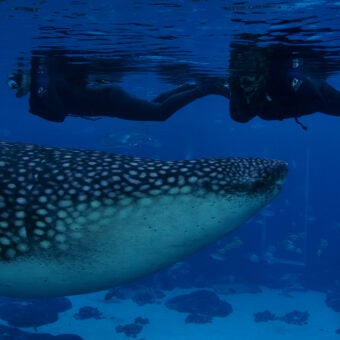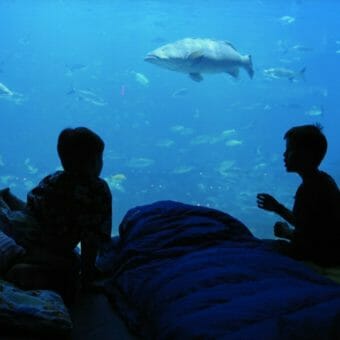-
Size
8-14 inches (20.3-35.5 cm) -
Diet
Kelp, red and green algae -
Range
Eastern Pacific -
Habitat
Kelp forests and rocky reefs
Physical Characteristics
- Coloration is a dark blue to blue-gray along the back, fading into a lighter blue-gray on the belly.
- Though color varies among members of the species, all have a distinct black spot just above the gill openings.
- Common length is 8-14 inches (20.3-35.5 cm).
- The body is oval in shape, with a rounded head and blunt nose.
Animal Fun Fact
The halfmoon has a strong relationship with the opaleye fish; juveniles of both species often school together during maturation.
Diet / Feeding
- Diet primarily consists of kelp and red or green algae, though the halfmoon is opportunistic and will feed on any small marine life that is available.
Range / Habitat
- Occurs in the Eastern Pacific from Vancouver Island to Baja, California.
- Found in kelp forests and rocky reefs from depths of 9 to 130 feet (3-40 m).
Reproduction & Growth
- The primary method of reproduction is through a broadcast method, where gametes are released into the water to fertilize; both fertilized eggs and larvae float in the water column until they mature.
- Occurs between July and October, once the fish has reached about 8 inches (20 cm) in length.
Conservation Status
- “Least concern” on the IUCN Red List.
Additional Information
- The halfmoon is named for its smooth, shallowly curved caudal fin that resembles a half-moon.
- They have a strong relationship with the opaleye fish; juveniles of both species often school together during maturation.
- Members of this species that live farther offshore often exhibit stronger blue coloring than their shore-dwelling counterparts.







